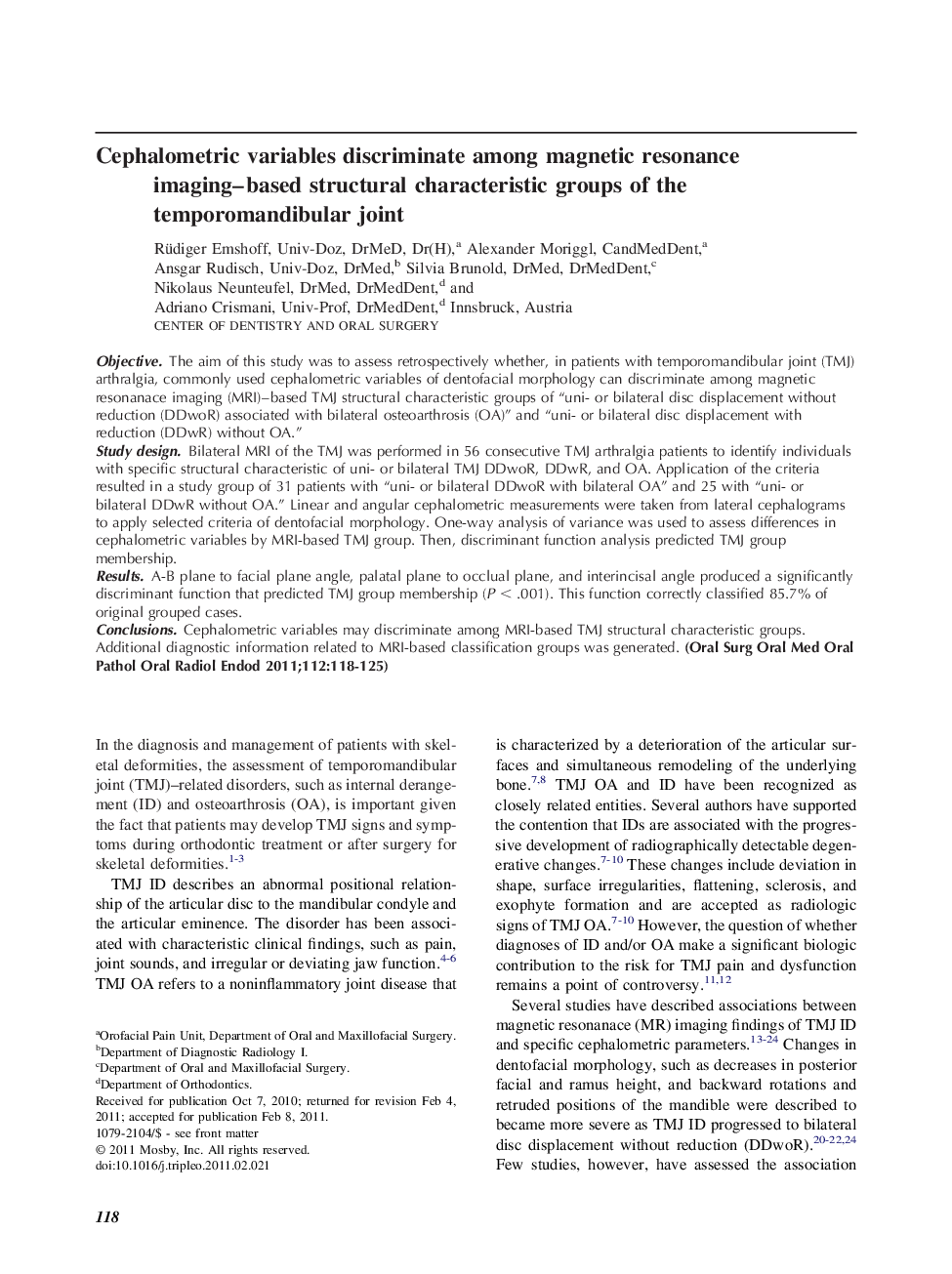| Article ID | Journal | Published Year | Pages | File Type |
|---|---|---|---|---|
| 3166996 | Oral Surgery, Oral Medicine, Oral Pathology, Oral Radiology, and Endodontology | 2011 | 8 Pages |
ObjectiveThe aim of this study was to assess retrospectively whether, in patients with temporomandibular joint (TMJ) arthralgia, commonly used cephalometric variables of dentofacial morphology can discriminate among magnetic resonanace imaging (MRI)–based TMJ structural characteristic groups of “uni- or bilateral disc displacement without reduction (DDwoR) associated with bilateral osteoarthrosis (OA)” and “uni- or bilateral disc displacement with reduction (DDwR) without OA.”Study designBilateral MRI of the TMJ was performed in 56 consecutive TMJ arthralgia patients to identify individuals with specific structural characteristic of uni- or bilateral TMJ DDwoR, DDwR, and OA. Application of the criteria resulted in a study group of 31 patients with “uni- or bilateral DDwoR with bilateral OA” and 25 with “uni- or bilateral DDwR without OA.” Linear and angular cephalometric measurements were taken from lateral cephalograms to apply selected criteria of dentofacial morphology. One-way analysis of variance was used to assess differences in cephalometric variables by MRI-based TMJ group. Then, discriminant function analysis predicted TMJ group membership.ResultsA-B plane to facial plane angle, palatal plane to occlual plane, and interincisal angle produced a significantly discriminant function that predicted TMJ group membership (P < .001). This function correctly classified 85.7% of original grouped cases.ConclusionsCephalometric variables may discriminate among MRI-based TMJ structural characteristic groups. Additional diagnostic information related to MRI-based classification groups was generated.
